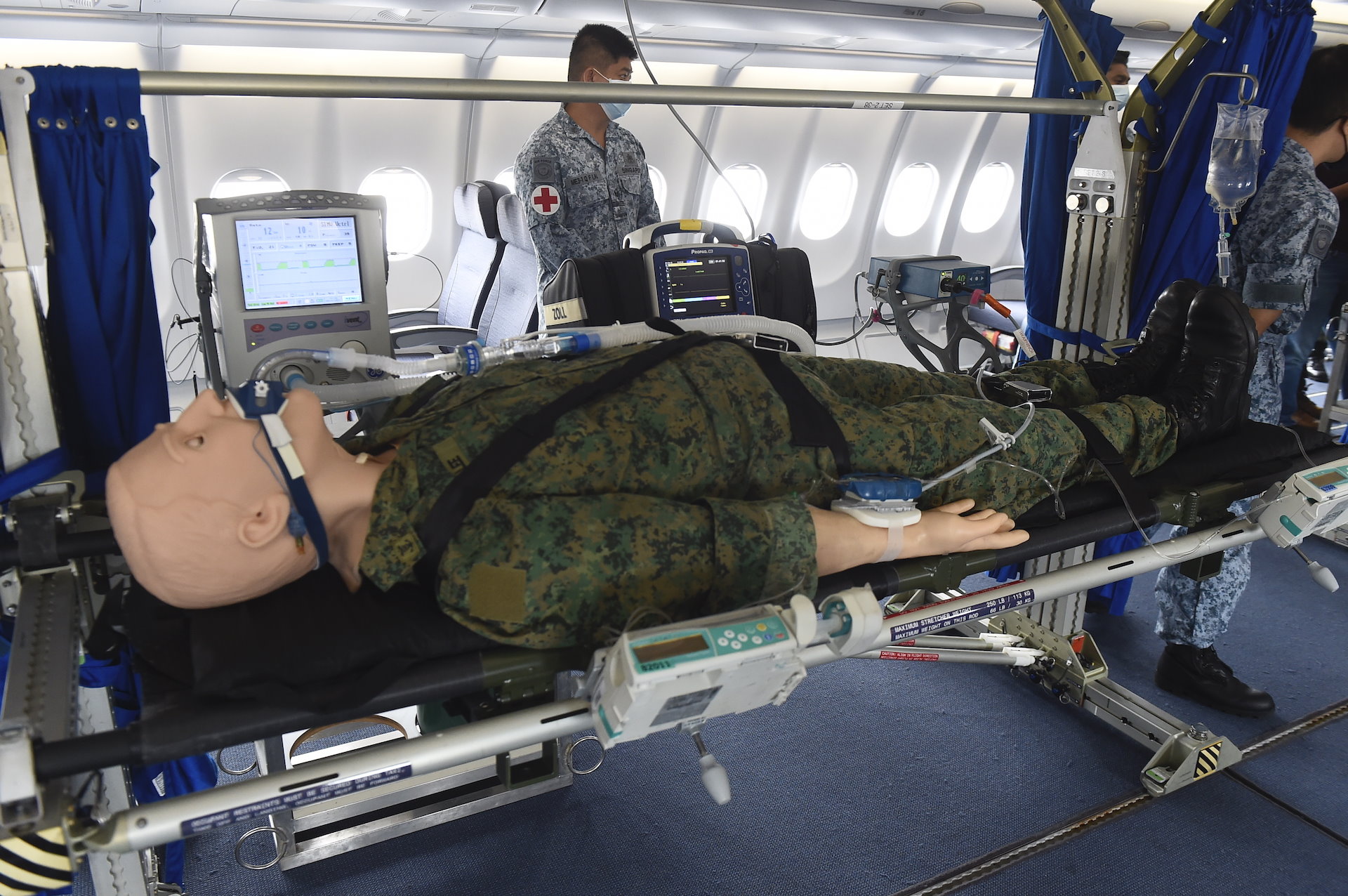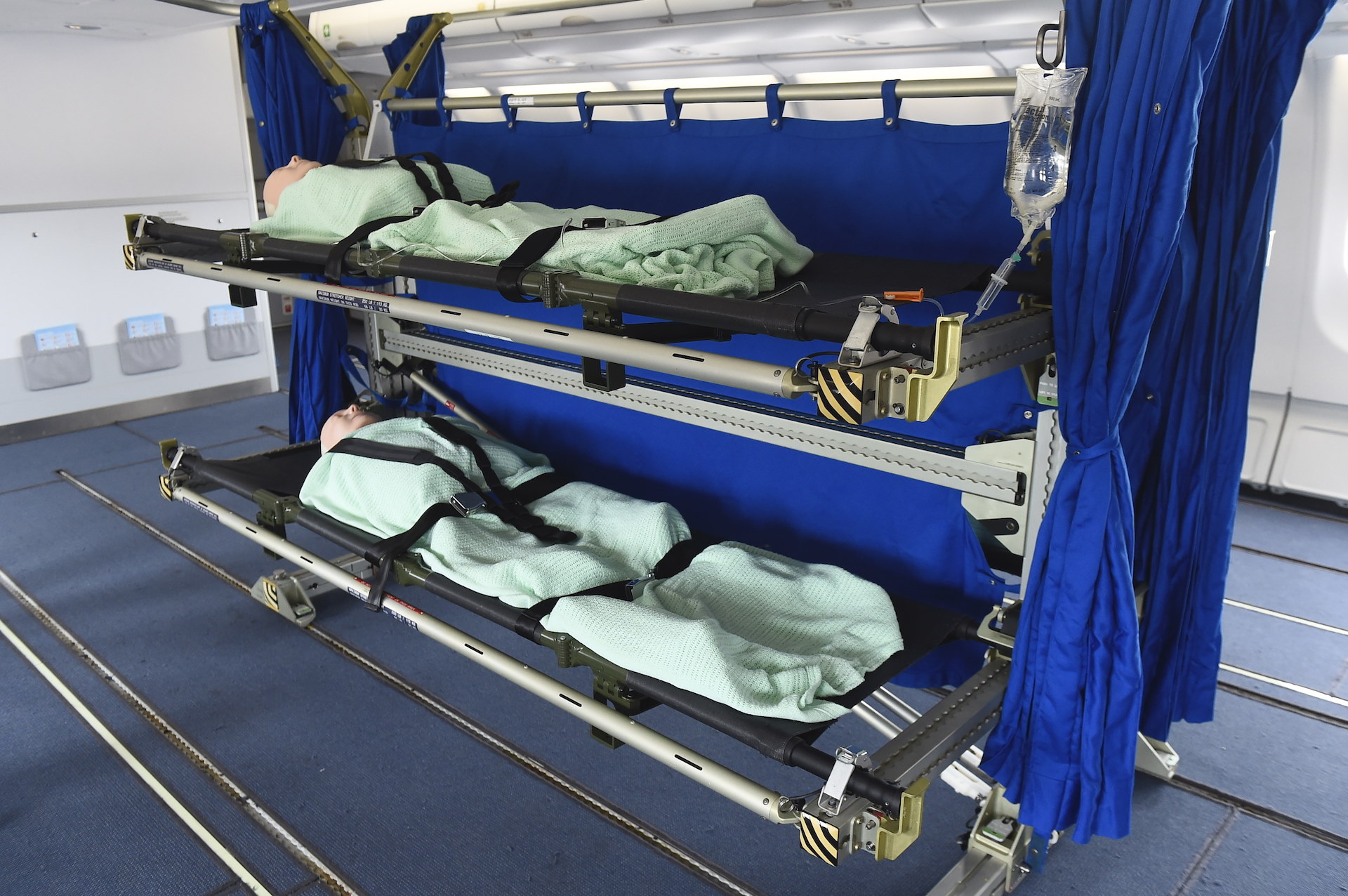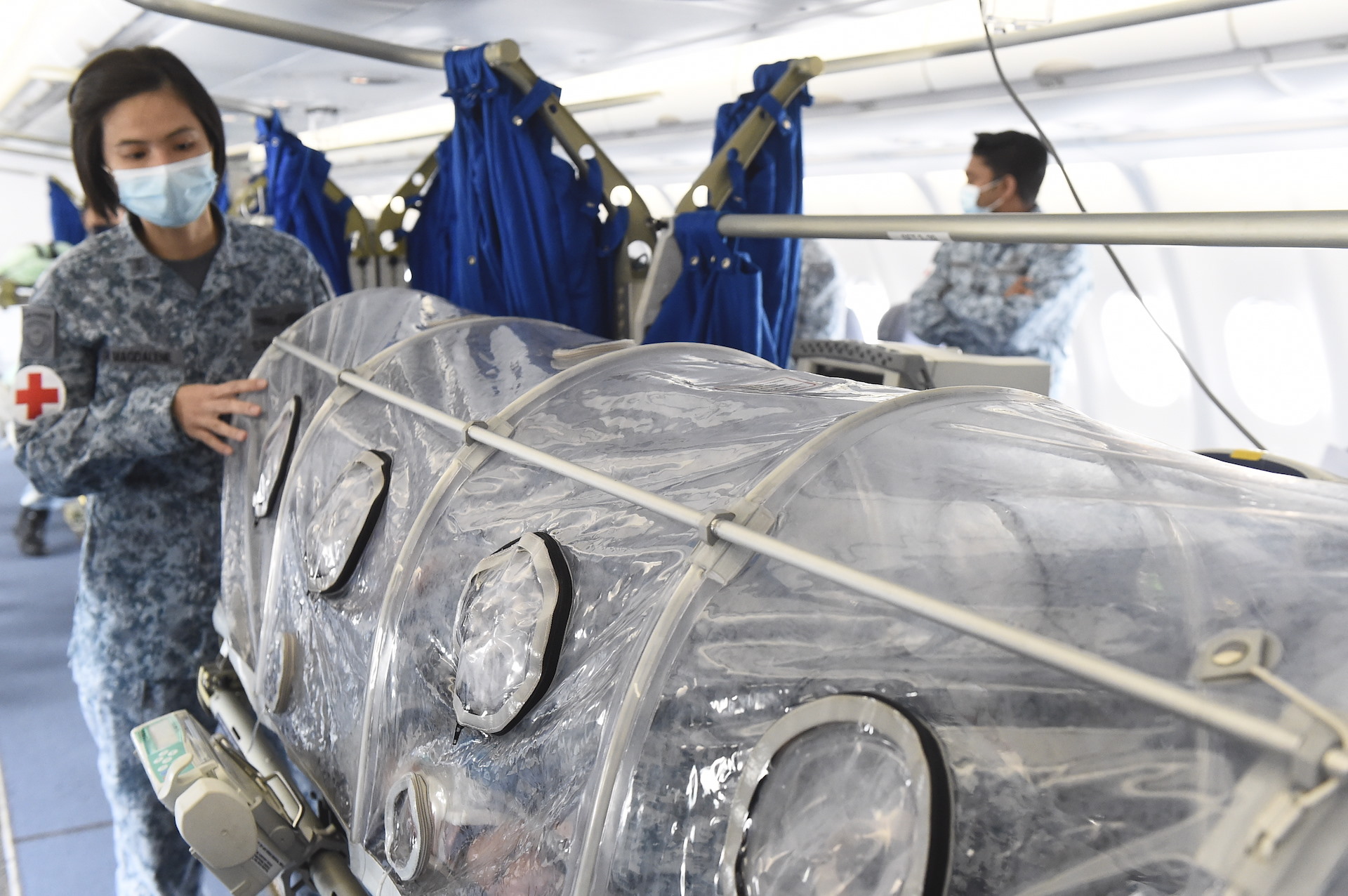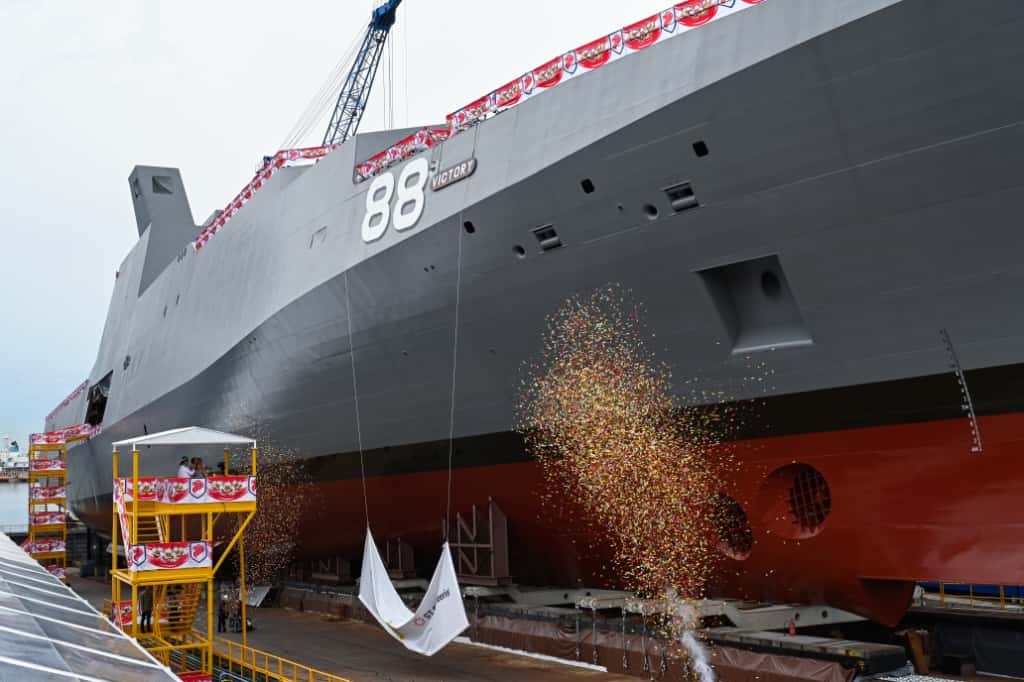MILESTONES
RSAF's TANKER IN THE SKY IS FULLY OPERATIONAL
20 Apr 2021
The A330 MRTT aircraft extends the endurance of RSAF's planes through its AAR capability and can be configured to support medical evacuation missions.


The Republic of Singapore Air Force's (RSAF's) next-generation tanker aircraft, capable of conducting air-to-air refuelling (AAR) and airlift roles simultaneously, is now fully operational.
The Airbus A330 Multi-Role Tanker Transport (A330 MRTT), which can carry 111,000kg of fuel, refuels fighter jets and other tankers in the sky so that they can fly longer missions.
It can also transport cargo and passengers and thus support operations such as the repatriation of critically injured persons from overseas.
Minister for Defence, Dr Ng Eng Hen, officiated at the ceremony that marked the A330 MRTT's achievement of the Full Operational Capability (FOC) status by the RSAF's 112 Squadron (SQN).
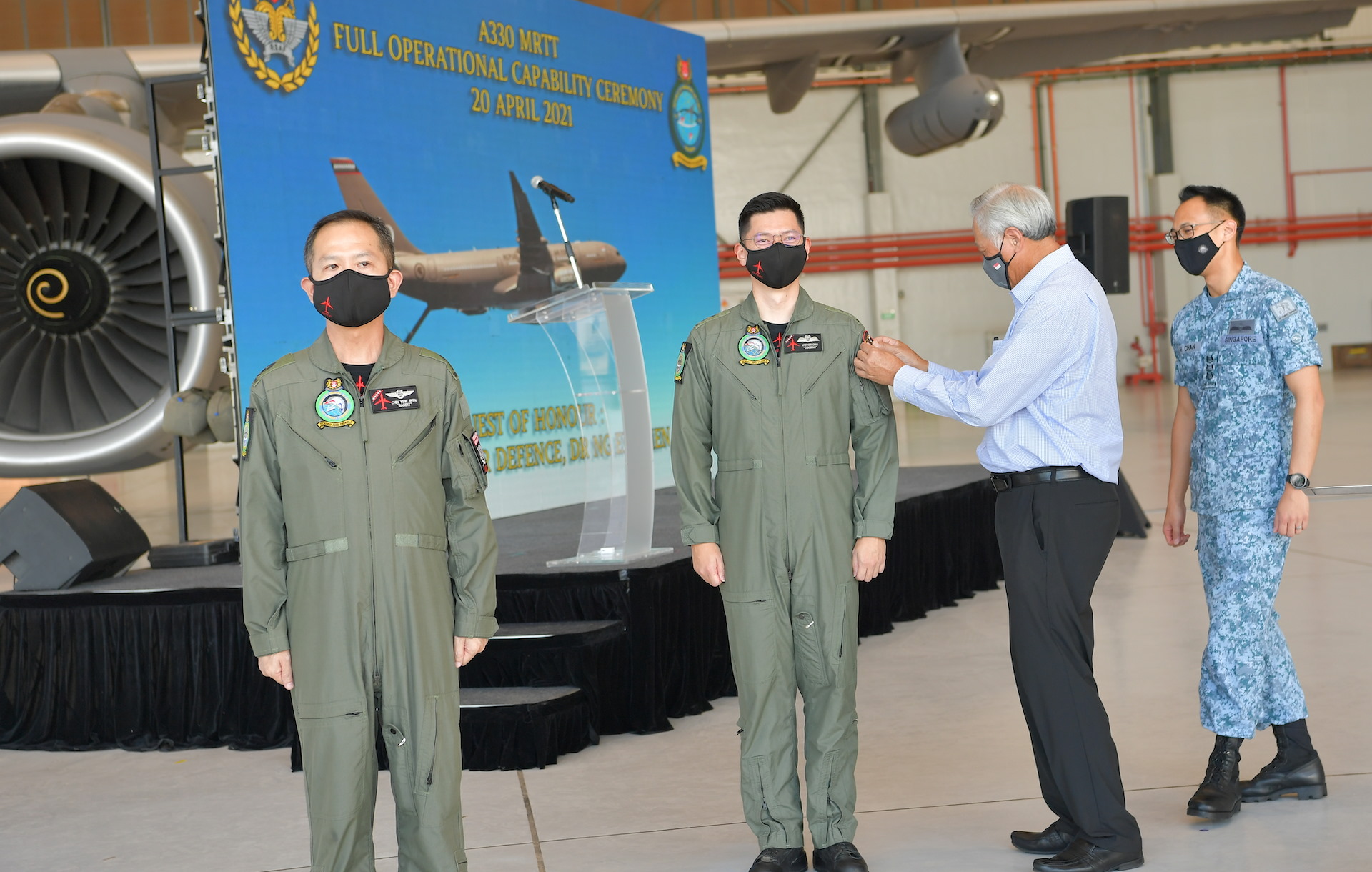
At the ceremony held at Changi Air Base (East) on 20 Apr, he said: "The MRTT…continues (the) roles of the KC-135R…but with an even larger capacity for fuel, cargo and passengers.
"The MRTT can hold 20 per cent more fuel than the KC-135R, twice the cargo capacity, and more than five times the number of passengers," he added.
Since the aircraft was delivered in 2018, it has taken part
in Exercise Forging Sabre 2019, National Day Parade 2019 as well as a
two-month detachment in Darwin at the end of last year – the RSAF's
first overseas exercise amid COVID-19.
Enhanced tanking capabilities
Attaining FOC is a validation of the AAR, airlift and evacuation roles the A330 MRTT was brought in to do, said Commanding Officer of 112 SQN, Lieutenant Colonel (LTC) Victor Ong.
Unlike the KC-135R, which has been in service for 20 years, the A330 MRTT is able to do tanker-to-tanker AAR. This means that an A330 MRTT is able to receive fuel from another tanker mid-air and travel to a further location without landing to refuel
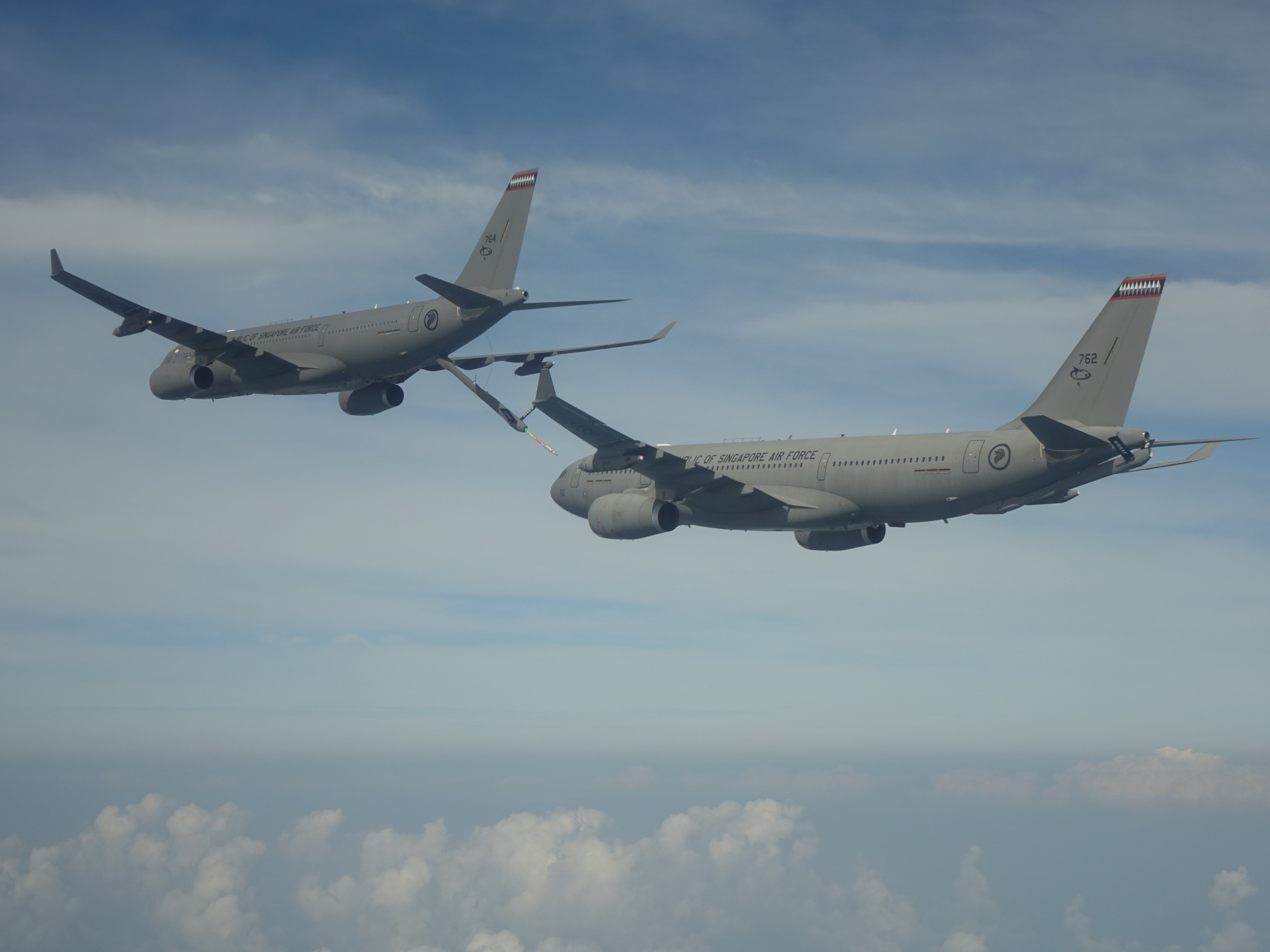
"This allows us to increase our endurance to meet the Singapore Armed Forces' operational needs.
"Because the capability is something new, the pilots have gone through intensive training to reach the proficiency required," said LTC Ong, who is also an A330 MRTT pilot.
Dr Ng noted that this ability allowed the A330 MRTT to
extend its operating footprint, saying: "We are now able to reach
all
our overseas detachments without layovers."
Equipped to save lives
The A330 MRTT is also now able to conduct aeromedical evacuation (AME) missions. These include the repatriation of critically injured persons for Humanitarian Assistance and Disaster Relief missions or Peace Support Operations.
It can provide care for up to three Intensive Care Unit-level patients, or 12 patients requiring light to moderate care.
It is also able to transfer patients with airborne infectious diseases via a Negative Pressure Individual Isolation System (NPIIS) that can be set up on board.
Such AME capabilities were designed based on experiences from operating the KC-135R, said Dr Ng.
"Instead of attaching stretchers to the floorboards of the aircraft in the KC-135R, as we had to do, they were now mounted in the cabin – much sturdier and more secure therefore against air turbulence.
"Instead of portable batteries, medical equipment is now powered by the aircraft's power supply," he said.
Journey to FOC
To achieve FOC, a mix of personnel from the KC-135R squadron and other transport squadrons was chosen to form the core A330 MRTT team.
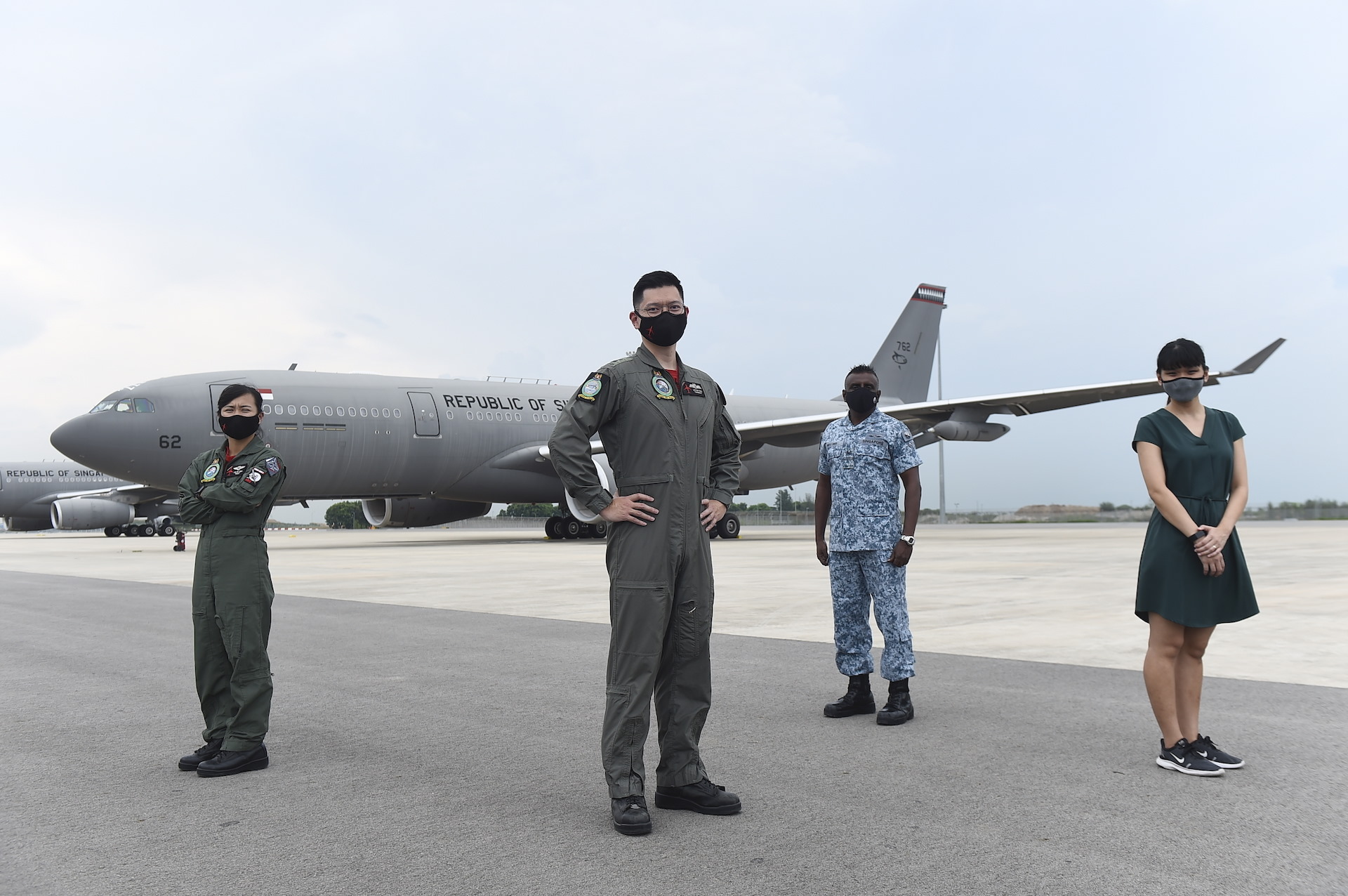
Former KC-135R boom operator, 1st Sergeant (1SG) Lim Pei Zhen noted that refuelling on the A330 MRTT could be conducted over longer periods of time because of better ergonomics.
"On the KC-135R, we conducted our AAR at the back of the aircraft in a prone position. Whereas for the MRTT, we are seated upright in the MRTT cockpit, allowing us to conduct our operations over a longer period," said the Air Refuelling Operator (ARO).
However, she added that the A330 MRTT's fly-by-wire system meant that the ARO is unable to feel feedback from the boom as it is making contact with the receiver aircraft.
"We overcome this is by training up our skills through the AAR simulator, which allows us to build up our proficiency," said 1SG Lim.
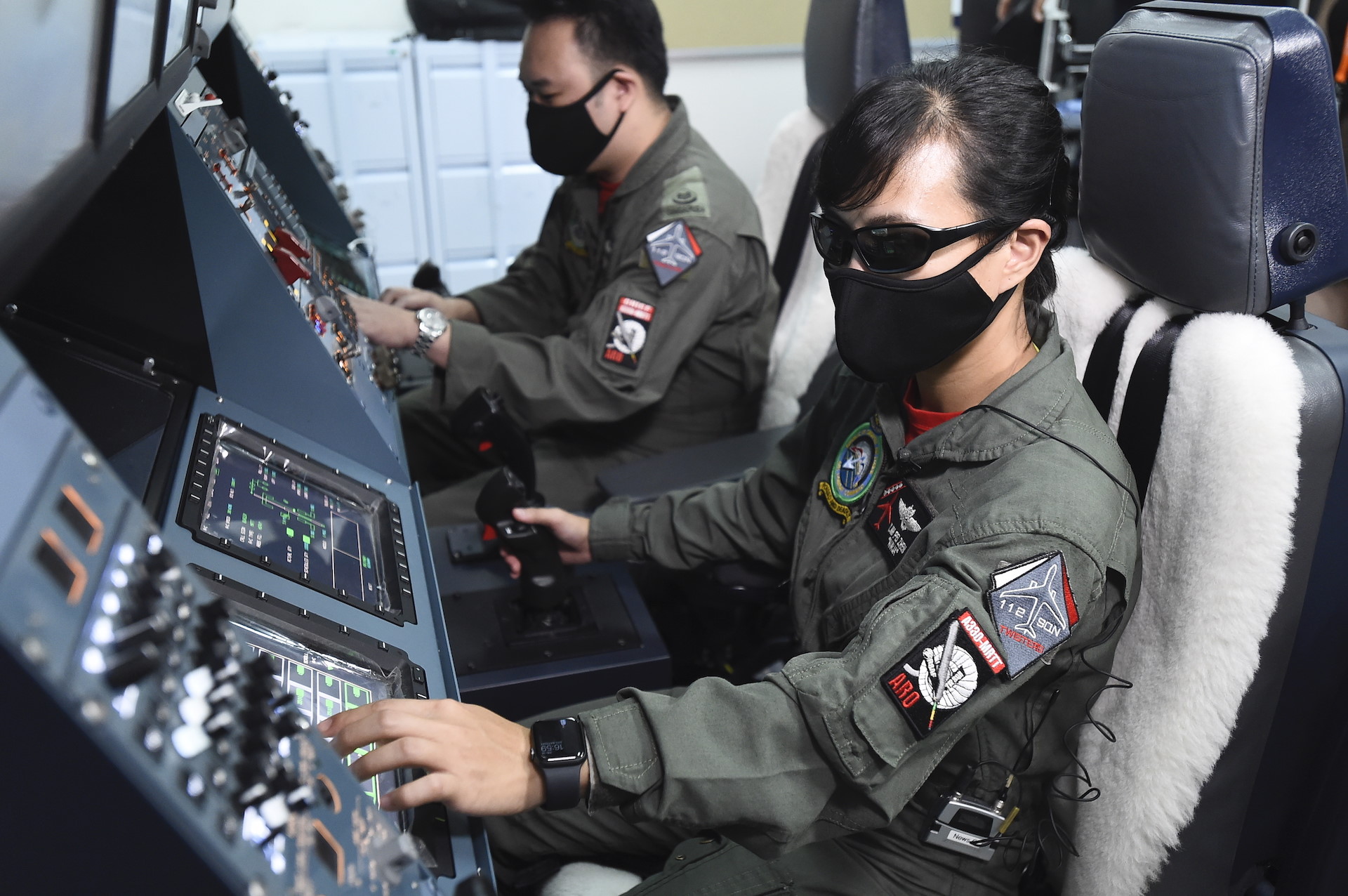
To optimise resources, the RSAF has also reduced the A330 MRTT operating crew size from four to three.
Said Ms Ang Wei Qin, a Principal Engineer from Defence Science and Technology Agency (DSTA), which helped managed the A330 MRTT programme: "The team looked at the processes and workload of the four crew members and identified tasks that could be reassigned from the fourth crew to the other three."
"We also consulted other air forces that had been operating the MRTT beforehand to confirm its feasibility."
These included the tasks of the mission coordinator, which have been reassigned to the co-pilot and ARO for less complex missions.
Airbus has since certified the A330 MRTT for a three-crew configuration as a standard operating feature.
DSTA is also working on automatic AAR technology, which will allow the boom to track the receiver and perform contact automatically, while the ARO oversees aircraft safety during the ops.
This is part of continual efforts by the RSAF, DSTA and Airbus to increase the capabilities of the A330 MRTT.
ALSO READ IN MILESTONES
-dsc_2181.jpg?sfvrsn=cf9c6464_2)
What you need to know about the new CMPB
14 Oct 2025
The new Central Manpower Base (CMPB) at Bukit Gombak officially opened its doors on 14 Oct, welcoming pre-enlistees, servicemen and the public alike to a state-of-the-art, one-stop hub for all things National Service (NS).
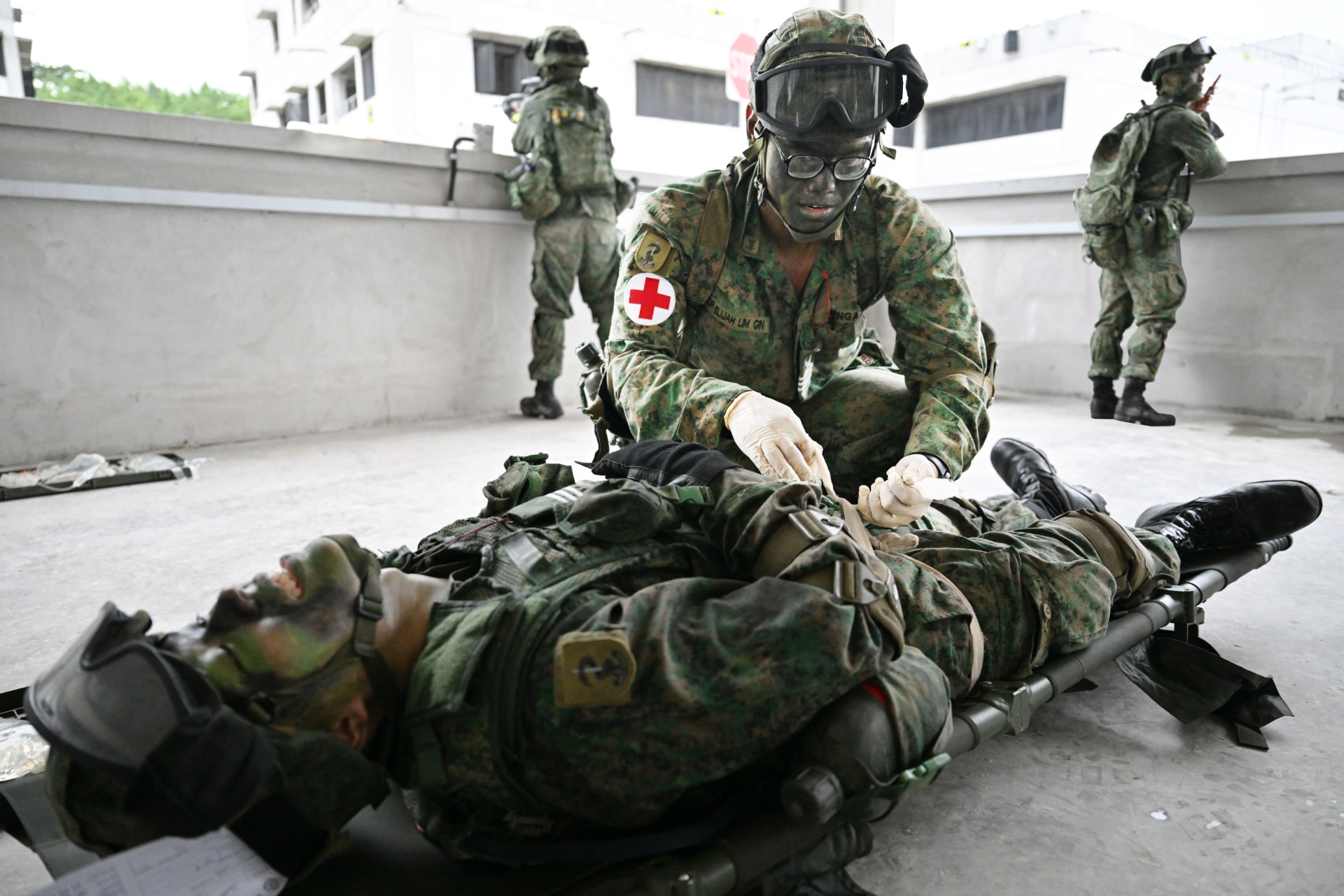
What it takes to become a medical officer
07 Oct 2025
This October, we celebrate the 100th batch of graduates from the Medical Officer Cadet Course. What does it take to become a military doctor? We uncover the highlights!
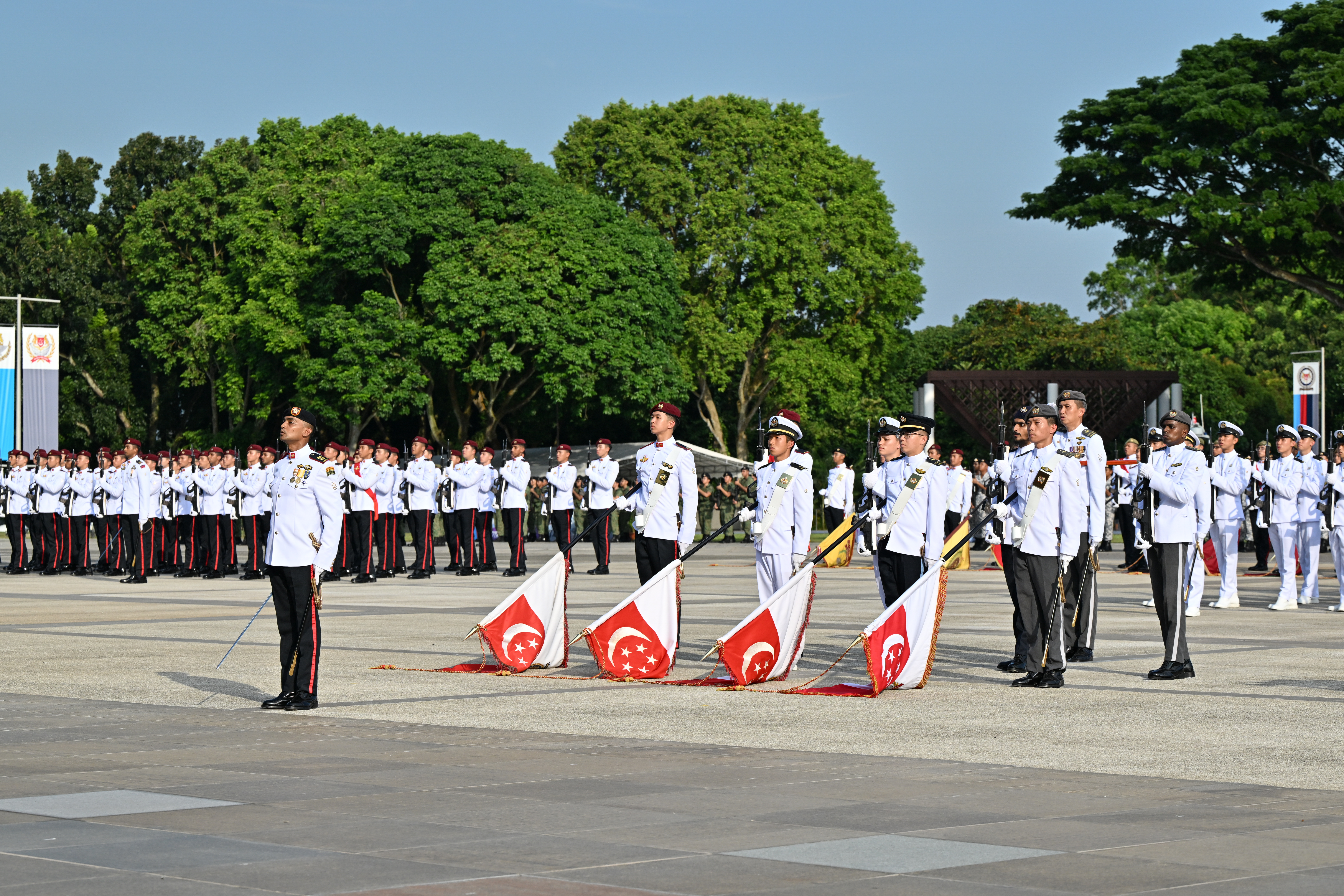
60 years on, their commitment remains strong
01 Jul 2025
The SAF celebrated its 60th anniversary on 1 Jul with a special SAF Day Parade and Combined Rededication Ceremonies across Singapore.

